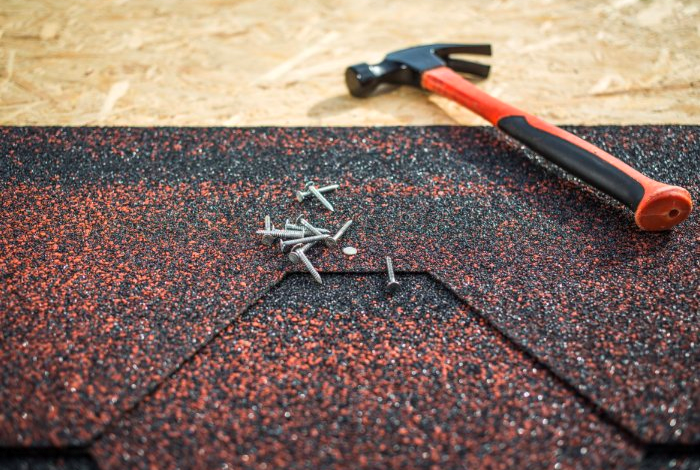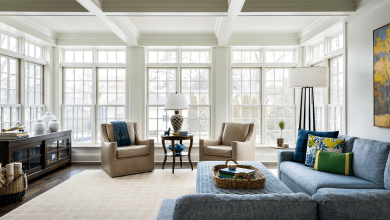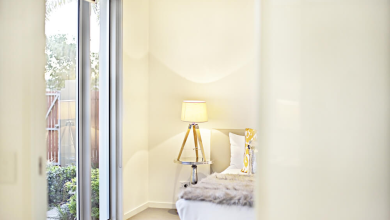Residential vs. Commercial Roofing: Is There a Difference?

There is a distinction between a residential and a commercial roof. However, Both necessitate the use of high-quality materials and good installation by experienced roofing companies. It is critical to recognize that these distinctions are crucial in locating a high-quality roofing system for each project. We will look at commonly asked questions by people regarding residential roofing and commercial roofing.
For more resources regarding roofing services, please visit our website at https://lewisvilleroofingcompanytx.com/.
Is Commercial Roofing More Expensive Than Residential?
In all sincerity, commercial roofing is more expensive than residential roofing because of the amount of personnel and materials and the size and protection equipment required for installation. According to HomeAdvisor, the average quote for fixing a roof is about $8,593, and most people pay between $5,601 and $11,727. Depending on the materials used and the region, roof repair costs typically range from $3.50 to $5 per square foot. Materials account for around 40% of the total cost, while labor accounts for 60%. Get various quotations from a reputable home or commercial roofing firm before starting any work to determine whether it suits your budget.
How Does Residential Roofing Differ From Commercial Roofing?
The three key variations between commercial and residential roofs are designed, the material used and the installation process.
Roof Design
Design is probably the most obvious distinction. The slope of a commercial roof is usually very low or completely flat; warehouses, shops, restaurants, and factories frequently have these types of roofs.
A typical commercial roof is much larger than a typical residential roof. Heavy things such as big HVAC blowers and industrial pipelines can be found on its surface. Multiple apertures for blower outlets, smokestacks, and skylights can be used to break up the surface.
The pitch of a residential roof is usually higher than that of a commercial roof. It is smaller than a commercial roof in most circumstances, except solar panels. The surface normally has nothing immediately on it. The amount of openings in the roof is normally limited to chimneys, vent stacks, and skylights.
Installation And Repair Methods
Commercial and residential properties have quite different installation and repair needs. A commercial roof, for example, might take a month or more to build due to its sheer size and the number of layers needed. On the other hand, a residential roof may be completed in a matter of days due to its simplified design.
Commercial roof repairs can quickly escalate into a large undertaking. When water penetrates a business roof’s strata, the entire roof must be inspected. It may be as simple as repairing one area of the roof, or it could be as complex as doing substantial repairs and reapplying layers to a large portion of the roof.
Leaks in a residential roof are frequently seen in isolated areas where shingles have gotten loose or flashing has gone loose. In most cases, the task may be completed in a few hours. Leaks can, of course, signify serious issues with a home’s roof. However, this is uncommon compared to isolated leaks caused by lesser issues.
The skillsets of commercial and residential roofers are also different. Commercial roofers must be familiar with a wide range of materials and the necessary methods for repairing and patching them. Roofers for residential buildings require a less specific skill set. Compared to a conventional commercial roof, they mostly operate with asphalt shingle roofs, which require very basic abilities.
Materials Used for Commercial Roofs
Commercial and residential roofs must be composed of durable materials depending on their size, exposure to natural elements, design, and other criteria.
This not only ensures the roof’s greatest longevity but also makes it versatile and simple to maintain.
Commercial roofs, for example, span a bigger area and include features such as ventilation and air conditioning. The materials utilized must sustain the design and last for a longer period.
Roofs for both residential and commercial buildings must be constructed using long-lasting materials such as:
- Shingles made of ceramic, asphalt, tile, or slate
- Shakes of Wood
- Roofing made of metal
Common types of Residential Roof
There are a few roof kinds that you encounter more frequently than others. However, asphalt roofs are the most frequent form of roof found on today’s residential dwellings.
This roof is composed largely of asphalt shingles and other asphalt roofing components. It is the most common because it is the most cost-effective roof style for the ordinary homeowner.
Common Types of Commercial Roofs
The common types of commercial roof include:
Metal Roofing
Metal roofing, because of its durability, is a popular business roof choice because of its long lifespan of 40 to 60 years. Metal roofing systems are available in various styles, including integrated solar or snow removal systems.
Metal roofing may have a polished appearance, high fire resistance ratings, and is more durable and long-lasting than many other alternatives.
The disadvantage is that metal is prone to rust. These modern metal roofs have protective surface layers added to manage damage from exposure, moisture, pollution, and other environmental conditions resulting from this problem.
Built-Up Roofing Membrane
If properly maintained, built-up roofing, made up of alternating layers of tar and gravel, may last for 20 years or more. The number of layers impacts the durability and cost of the product. Although an old method, it is a versatile roof style and is economical and easy to repair.
This sort of seamless roofing can withstand heavy foot traffic, but it relies on a strong understructure to support the weight and vibrations of movement. It’s UV-resistant and may be covered with a heat-reflective coating. It has the disadvantages of being one of the roofing materials with the shortest lifespans, and it can be difficult to localize the cause of a leak as the roof ages.
Green Roof
A green roof may live anywhere between 30 and 50 years. They are made out of a robust waterproof membrane covered in green plants. These green masterpieces enhance air quality and frequently provide a green space for employees to unwind and recuperate.
Protection from the elements, potential utility and government incentives, and improved aesthetics are just a few of the benefits. Water and drainage management, temperature control, and sensor capability are common features.
On the other hand, Green roofs need continual upkeep and monitoring, which is capital intensive.
Shingle
Shingles are usually seen on residential structures (like your own home), but they are also used in commercial facilities, particularly those with steep rooflines.
Asphalt, architectural, slate, plastic, and ceramic shingles are just a handful of available materials.
This material is simple to install, inexpensive, and adaptable. Its disadvantage is that its lifespan varies by brand, but it isn’t as lengthy as other commercial roofing options. If your building is in a shady region, shingles are also prone to mildew and moss.
Commercial roofing is different from residential roofing. Thus, it is important to seek an expert in planning the best roofing type for your project.





